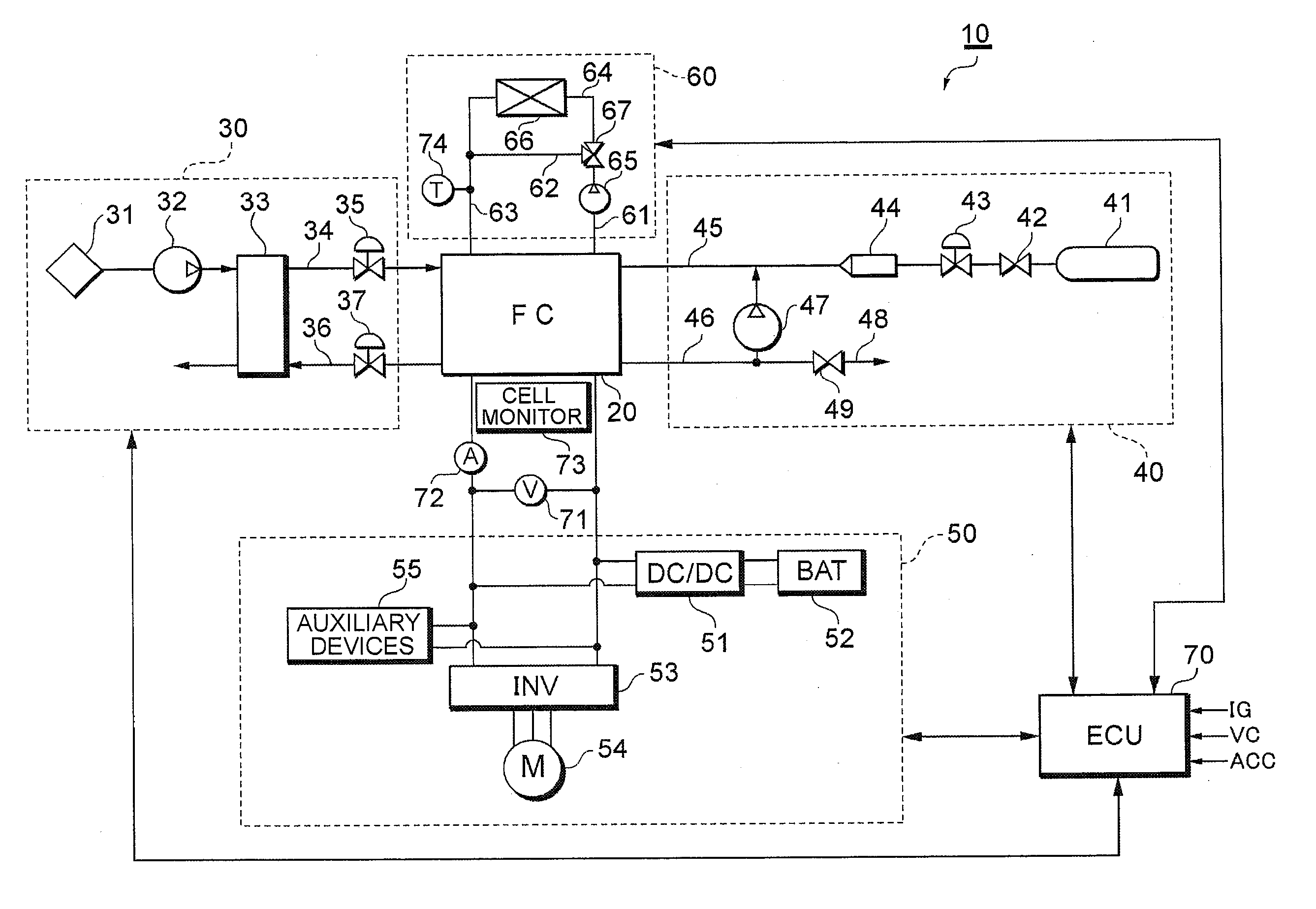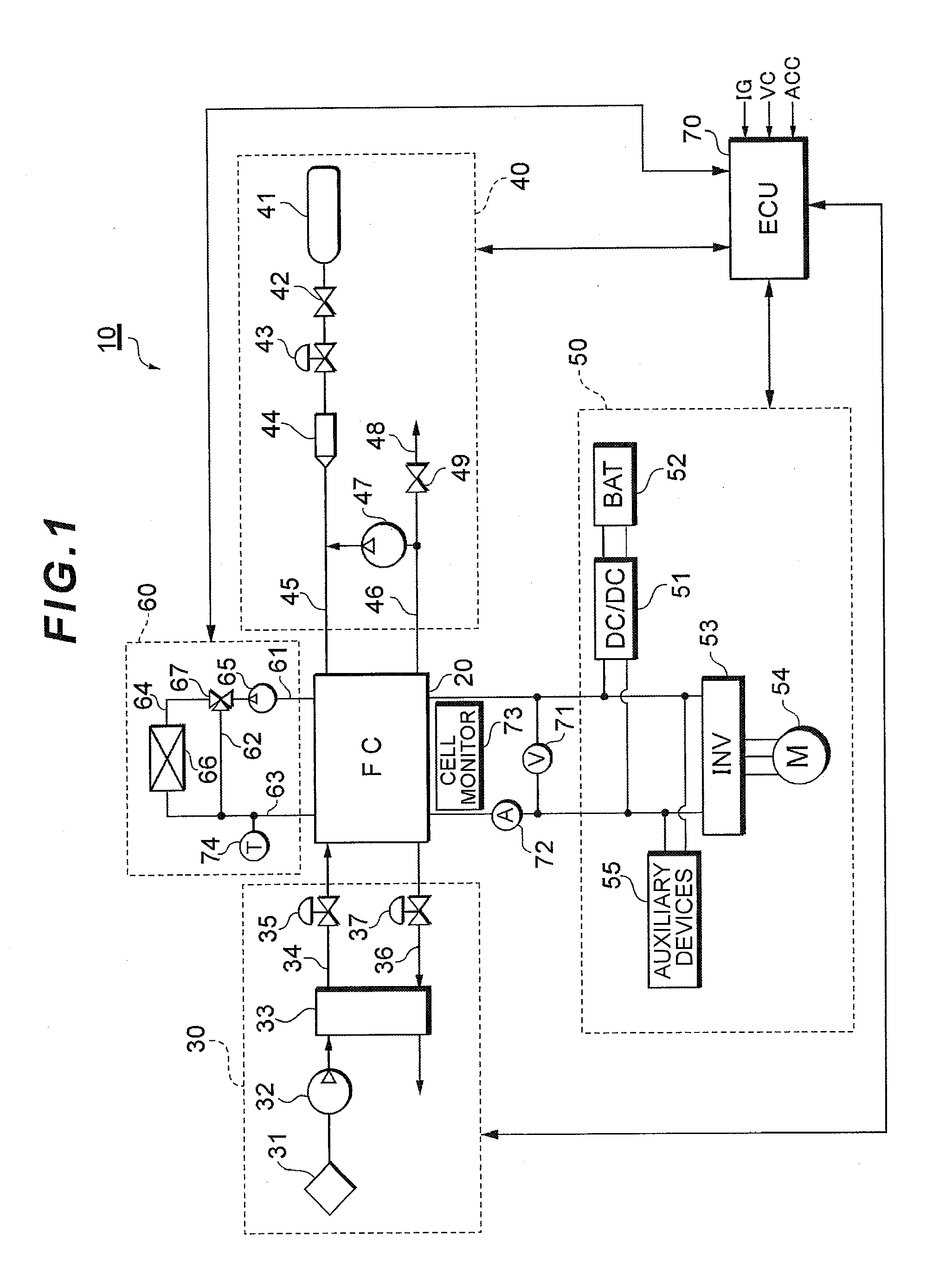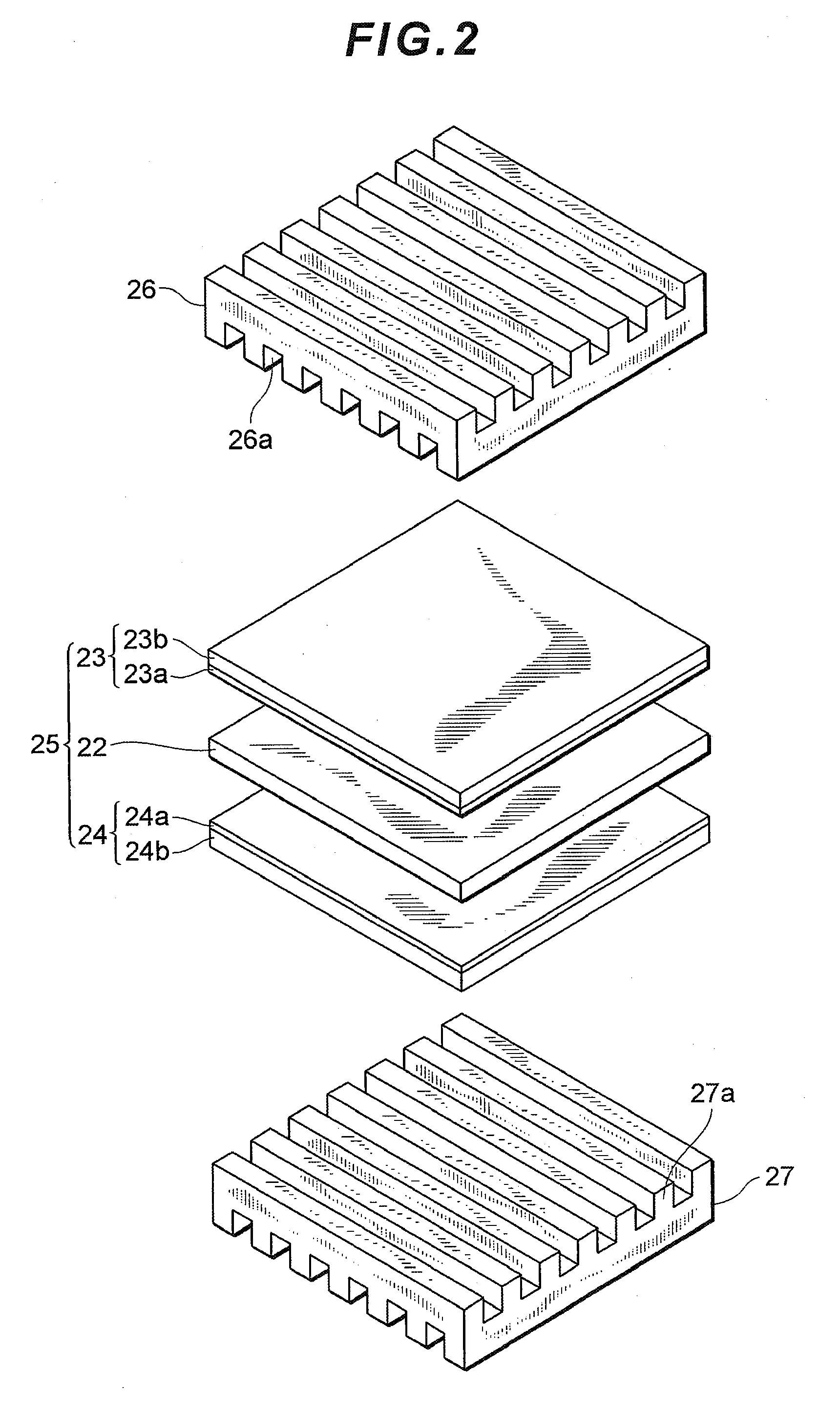Fuel cell system
a fuel cell and system technology, applied in the field of fuel cell systems, can solve the problems of difficult to completely equalize the power generation performance and conditions of all the cells, the tolerable range of power generation cannot be flexibly changed depending on the cell voltage reduction factor, and the inability to flexibly change the tolerable range of power generation. the effect of simplifying the control of the cell voltag
- Summary
- Abstract
- Description
- Claims
- Application Information
AI Technical Summary
Benefits of technology
Problems solved by technology
Method used
Image
Examples
embodiment 1
[0059]Now, cell voltage management according to Embodiment 1 will be outlined.
[0060]The controller 70 performs operation control while limiting the operation so as to prevent the cell voltage from decreasing below a lower voltage limit Vth. The controller 70 changes conditions for the operation limitation depending on the operation condition of the fuel cell stack 20. The operation condition is a concept collectively referring to physical quantities relating to the cell voltage reduction factors (a shortage of the supplied reaction gas, a decrease in stack temperature, and the like). The conditions for the operation limitation refer to conditions for limiting the cell operation (for example, the lower voltage limit Vth, indicating the lower limit of the power generation tolerable range). The severity of the conditions for the operation limitation is desirably reduced consistently with the stack temperature. For example, the lower voltage limit Vth for low-temperature starting is des...
embodiment 2
[0083]Cell voltage management in a low-temperature environment according to Embodiment 2 will be described.
[0084]FIG. 6 is a flowchart showing a low-temperature starting routine. The routine is invoked during a low-efficiency operation and executed by the controller 70. The low-efficiency operation refers to an operation of controlling the supply amount of the reaction gas supplied to the fuel cell stack 20 with an air stoichiometry set to about 1.0 so as to increase a power loss for operation at a low power generation efficiency. The air stoichiometry refers to an oxygen excess rate, and indicates how excess the supplied oxygen is with respect to the amount of oxygen required for adequate reaction with hydrogen. Performing the low-efficiency operation with the air stoichiometry set to a small value increases concentration overvoltage and thus a heat loss (power loss) contained in energy obtained through the reaction between hydrogen and oxygen. The low-efficiency operation is utili...
embodiment 3
[0097]Now, cell voltage management according to Embodiment 3 will be described. The cell voltage management described below is assumed to be used mainly for the normal operation. However, owing to the lack of the temperature limitation, the cell voltage management can in principle be applied to the low temperature environment (for example, during the low-efficiency operation).
(1) Cell Voltage Management Based on the Cell Electrode Potential
[0098]FIG. 7 shows a variation in electrode potential, that is, the electrode potentials measured during the starting and the normal operation and when the oxidation gas is in shortage and when the fuel gas is in shortage. During the starting, the output voltage from the fuel cell stack 20 is set to an open end voltage, resulting in a zero output current. At this time, a cathode potential CA1 exhibits no voltage drop caused by a DC resistance component and is set to the open end voltage. Furthermore, an anode potential AN1 remains zero. A cell vol...
PUM
| Property | Measurement | Unit |
|---|---|---|
| voltage | aaaaa | aaaaa |
| output voltage | aaaaa | aaaaa |
| temperature | aaaaa | aaaaa |
Abstract
Description
Claims
Application Information
 Login to View More
Login to View More - R&D
- Intellectual Property
- Life Sciences
- Materials
- Tech Scout
- Unparalleled Data Quality
- Higher Quality Content
- 60% Fewer Hallucinations
Browse by: Latest US Patents, China's latest patents, Technical Efficacy Thesaurus, Application Domain, Technology Topic, Popular Technical Reports.
© 2025 PatSnap. All rights reserved.Legal|Privacy policy|Modern Slavery Act Transparency Statement|Sitemap|About US| Contact US: help@patsnap.com



